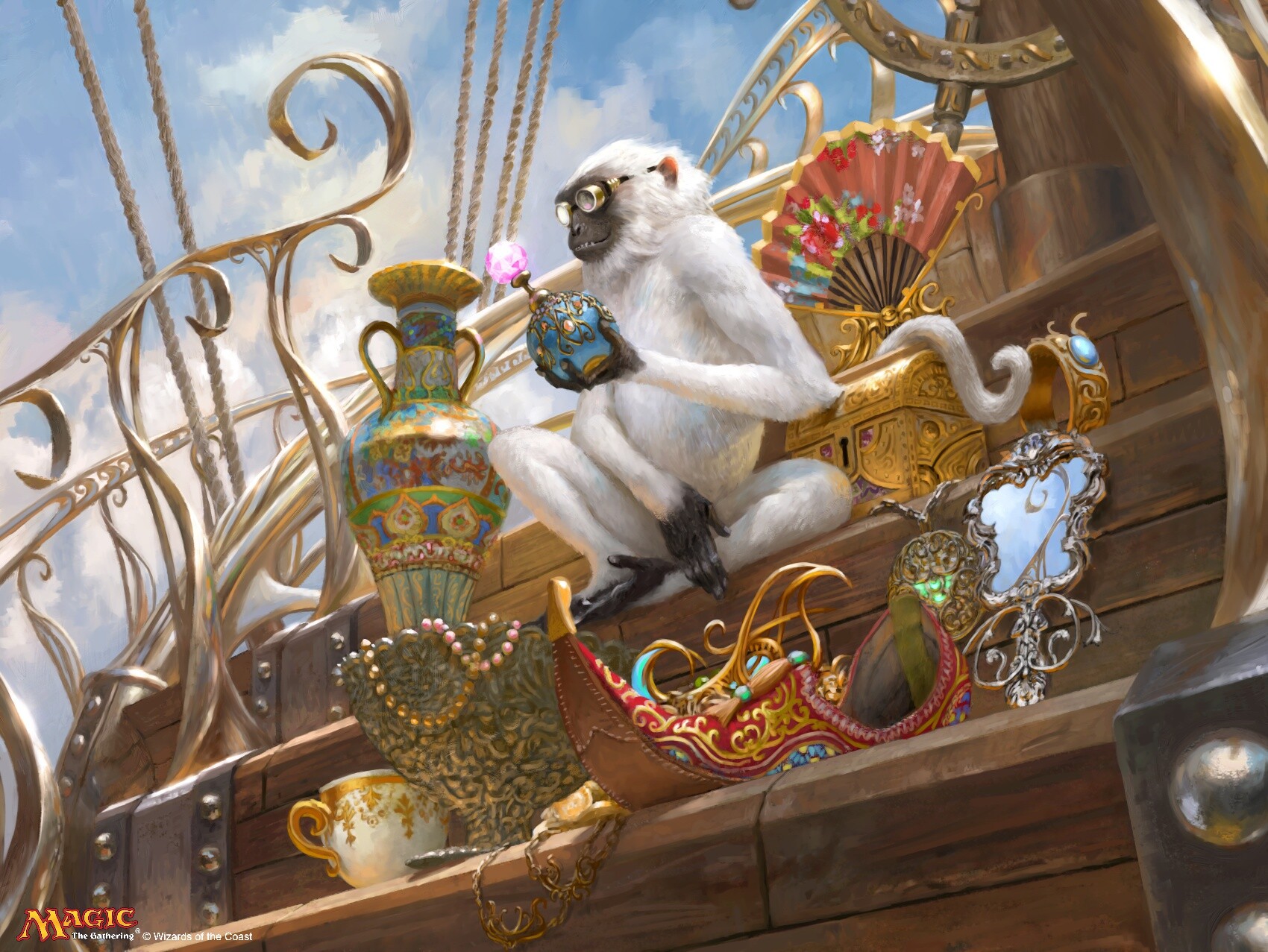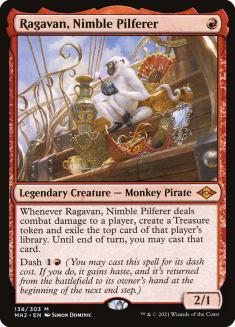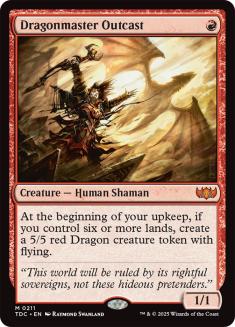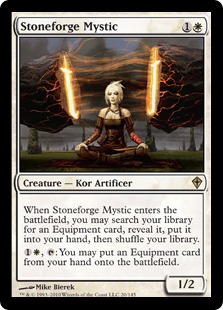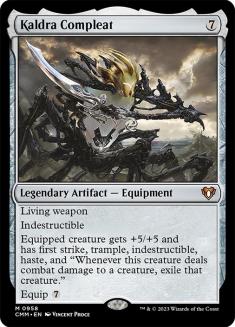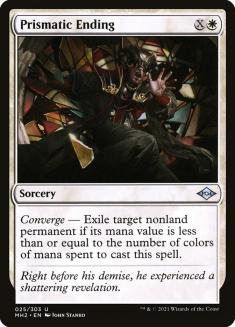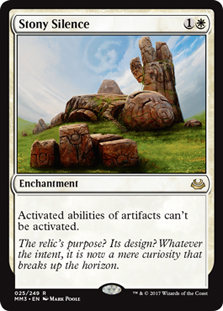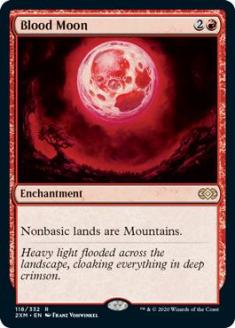All the talk coming out of the first week of Modern Horizons 2 was about Urza’s Saga. The powerful land found success in a wide range of archetypes and strategies and its power was clearly on display, whether it was tutoring for The Underworld Cookbook and Amulet of Vigor or making a pair of giant Construct tokens.
In its typical reactionary nature, the hive mind has already started anticipating a ban, and to some degree I think that’s due to the recent spate of bans that has occurred in Standard. Set after set we saw new powerful cards dominate early and no metagame correction came. And often a ban just allowed a new bogeyman to rise and take over the format. We’ve now grown to expect that such a dominant weekend will only lead to more dominance.
But Modern is a much more resilient format than Standard. The well of cards players can draw from is deeper, and the disruption is more powerful, so it’s rare to see cards the metagame can’t contain. Week 2 saw a real correction, in that while Urza’s Saga was still quite popular among successful decks, such success was largely predicated on the performance of Amulet Titan, which accounted for eight of the thirteen lists in the Top 32s of the two Modern Challenges on MTGO that featured Urza’s Saga.
The newcomer to the top tables was Ragavan, Nimble Pilferer, which like Urza’s Saga last week found success in a variety of lists, thereby demonstrating its power. The only question is why it took the extra week for Ragavan to break out. After all, Ragavan was one of the most hyped-cards of the set, and it made an immediate impact in Legacy, where Izzet Delver with it and Dragon’s Rage Channeler is clearly the best deck in the format.
What Took So Long?
The answer here is rather simple, but it requires a deeper understanding of how the card Ragavan works. What we’ve seen over the first two weeks of Modern Horizons 2 is a typical evolution in the early days of a new metagame. Week 1 we saw Urza’s Saga and Shardless Agent succeed in a variety of powerful, proactive strategies. Decks like Amulet Titan and Living End that are minimally disruptive, but can easily go over the top if you’re unprepared.
They took advantage of an unprepared metagame where many players are playing untuned decks, just like the days where Mono-Red Aggro seemed to win every SCG Tour Open held on a release weekend. But that deck would inevitably fade as the metagame adapted and players found the more reactive strategies that matched up effectively against aggression.
This same process is playing out in Modern right now, and Ragavan is the driver of the response. It may seem like a souped-up Jackal Pup would fit best in the proactive, Week 1 strategies, but the secret to Modern’s newest Monkey is that it’s at its best when backed by powerful disruption.
Connecting with Ragavan generates a cascading mana and card advantage that will take over the game, even if you don’t literally end the game that quickly. The best way to ensure that Ragavan connects is to have the discard, counterspells, and removal to ensure your opponent doesn’t answer it or put a bigger blocker in its way. Having more threats doesn’t help you nearly as much as loading up on disruption.
This is part of why Ragavan was so immediately successful in Legacy. Because the dominant cards in that format are the disruption. Force of Will and Daze are so powerful and versatile that you can plug Ragavan right into the known formula and not worry about being unprepared for more linear strategies. Modern has plenty of great disruption cards, but nothing on that level in terms of versatility, so it took a bit longer to find the right surrounding pieces.
You normally don’t get this kind of power in a one-mana package. In Modern it has normally come at two mana with cards like Wrenn and Six, Stoneforge Mystic, and Dark Confidant. I view Ragavan as an upgrade on those threats in the same way that Death’s Shadow has been an upgrade to Tarmogoyf when it comes to threats that provide efficient stats.
Going from two mana to one mana may not seem like much but it makes a huge difference. It means you can be faster getting to the battlefield so your opponent has less time to find and cast an answer. It makes it easier to protect with counterspells or discard since you can double-spell sooner, and it means you aren’t behind on tempo when your opponent has the Lightning Bolt or Fatal Push. Now that we’re finding its proper homes, Ragavan is a game-changer for Modern just like Death’s Shadow was.
Ragavan’s Two Homes
The next step for Ragavan is to wade through the various decklists that feature the card and find which ones are the best. They all follow the midrange template of a handful of efficient threats, great disruption, and enough card advantage to win long games, but inevitably a few will emerge as the best of the best.
To me, there are two categories of Ragavan decks, and they’re defined by the disruption they play. You’re always going to play red removal like Lightning Bolt, and additional removal can come via a splash color, but your second color is determined by what non-removal disruption you’ve chosen. You can go blue and play counterspells, or black and play discard.
Both routes are powerful enough to succeed, so I don’t think comparing a discard-centric list with a counterspell-centric list is particularly fruitful. Neither will be better than the other in a vacuum as the difference between them will largely be determined by how discard and counterspells match up against the current metagame. So I’m interested in finding the best list of each type.
The Counterspell Route
When it comes to playing Ragavan with counterspells, the key is in not getting locked into trying to resolve and connect with Ragavan as early as possible. Counterspells require you to maintain your optionality as much as possible because once a threat resolves, they’re powerless to stop it. In this vein I look at Ragavan like Dragonmaster Outcast in that it’s a threat that you can cast in the mid-game with a full hand and start pulling ahead without ever putting your shields down.
So while you’ll certainly be casting Ragavan on Turn 1 on the play when the risk is minimal, you’ll be more careful with it later on. Despite its size, Ragavan will remain a major threat so long as you keep your opponent’s battlefield under control.
Understanding this, I don’t want to pair Ragavan and counterspells with threats that encourage you to tap out on your turn. This includes threats like Dragon’s Rage Channeler that want you to play sorceries to enable delirium or Sprite Dragon that wants you to play on your main phase.
I also want each threat to be powerful enough to take over a game by itself, since counterspells are so good at protecting a winning position. These two factors lead me precisely to Stoneforge Mystic. So it was no surprise to see a Jeskai Stoneblade deck with Ragavan take down last Saturday’s Modern Challenge:
Creatures (10)
Planeswalkers (3)
Lands (23)
Spells (24)

My one apprehension about going the Stoneforge Mystic route is that the Equipment in the deck preclude you from playing Lurrus of the Dream-Den as a companion. But I think Stoneforge Mystic is such a perfect threat for this style of deck that I’m willing to make that sacrifice, which comes with not only Stoneforge but also powerful planeswalkers like Teferi, Time Raveler and Jace, the Mind Sculptor.
With the idea of using Stoneforge Mystic as a standalone threat as much as possible, I adding Kaldra Compleat to the Equipment package over something like Sword of Fire and Ice, which finds its way to the sideboard for creature matchups where you’ll invariably cut some counterspells and don’t have much use for Sword of Feast and Famine.
I’m also a big fan of Prismatic Ending as the second removal spell, since its versatility covers almost every case where a threat slips through your counter wall. Note that the Treasure tokens from Ragavan let you answer four- and five-mana-value permanents with it if necessary.
This is an impressive list and there isn’t anything I would change about the maindeck. But because Modern is in such a state of flux, sideboards will need to be updated every week at the very least. Here’s the list I’d start with based on where I see the metagame moving:
Creatures (10)
Planeswalkers (3)
Lands (23)
Spells (24)

Stony Silence seemed mostly a response to the rise of Affinity decks last week, but despite the hype those decks have fallen flat, and I don’t expect them to be a major part of the metagame moving forward. You can win the card advantage war against Thought Monitor and Thoughtcast so I’m opting for Wear // Tear as a great answer to their key threats: Urza’s Saga, Cranial Plating, and Nettlecyst.
I’ve also gone for Aether Gust over Subtlety because I don’t think this deck taps low enough to want another free spell at the cost of card advantage. Both let you answer Primeval Titan through Cavern of Souls, which is their primary purpose here, but Gust is the more flexible card against aggressive strategies, since it can remove creatures from the battlefield.
Mystical Dispute is a concession to this deck’s own success. It’s the best card for winning counter wars in the mirror match and against other control decks, and while it made sense to cut them in the week following a poor showing from Archmage’s Charm and friends, that time is over.
The last change I’ve made is adding a Kozilek, Butcher of Truth as a concession to Dimir Mill. Fractured Sanity is another upgrade for the deck, and it’s already been popping up from time to time. It had a good weekend and this deck doesn’t have a great clock, making the matchup dicey. If Dimir Mill drops off in the next few days, feel free to cut it, but for now I’d rather be prepared. You can afford the sideboard slot because you don’t need a bunch of narrow removal to fill gaps now that you have Prismatic Ending.
Turning to the Dark Side
Now let’s look at how to best pair Ragavan with a discard-centric disruption package. The main difference between discard and counters is exemplified in the old adage:
You can’t Thoughtseize the top of their deck.
What this means is that once you rip your opponent’s hand apart and use the information to gain an advantage, it’s up to you to either solidify that advantage in the face of their best possible draws, or simply end the game before they find what they need to claw back to even. With the power level of Modern, the former isn’t a reliable strategy without counterspells, so when pairing Ragavan with discard, it’s important to also pair it with efficient threats that can close the game in a hurry.
Historically that has meant turning to green and the power of Tarmogoyf, and indeed many players had success with Ragavan Jund builds last weekend. But with Scourge of the Skyclaves joining Death’s Shadow, I don’t think that’s necessary anymore. Green offers little else beyond Tarmogoyf and I’d rather play a smoother, two-color manabase or find a better splash.
To that end, I’m intrigued by the following Mardu list, which incorporates Prismatic Ending:
Creatures (19)
- 4 Death's Shadow
- 3 Kroxa, Titan of Death's Hunger
- 4 Scourge of the Skyclaves
- 4 Dragon's Rage Channeler
- 4 Ragavan, Nimble Pilferer
Lands (19)
Spells (22)

This is the most no-nonsense list around, and when it comes to playing with discard spells, that’s what I want. I don’t want to depend on putting together synergies, because discard spells push you to resource-light games. I want each threat to be as efficient as possible, with enough built-in card advantage to contend in the late-game. Dragon’s Rage Channeler, Death’s Shadow, and Scourge of the Skyclaves provide the former, while Lurrus, Kroxa, and Ragavan provide the latter.
And as much as I like Prismatic Ending in the Jeskai list, it may be better here since it allows you to have enough cheap removal against fast creature decks without falling victim to powerful cards like Wrenn and Six or Ensnaring Bridge. With it you also save sideboard space, not having to worry much about having enough answers to each type of noncreature permanent, since it can handle all of them.
Moving forward, I’m worried this deck has too many threats, especially since Lurrus is available as one every game. In such decks I err toward fewer threats to ensure I have the necessary disruption every game.
I also want to see more copies of the Horizon lands in the manabase given how well they let you manage your life total and ensure that you don’t flood too often in long games since you’re never drawing into piles of card advantage from Archmage’s Charm and Snapcaster Mage. Considering these issues, as well as updating the sideboard for the changing metagame, I’d recommend the following list:
Creatures (18)
- 4 Death's Shadow
- 2 Kroxa, Titan of Death's Hunger
- 4 Scourge of the Skyclaves
- 4 Dragon's Rage Channeler
- 4 Ragavan, Nimble Pilferer
Lands (19)
Spells (23)

I found room for two more disruptive spells in the maindeck by trimming a Kroxa and a Temur Battle Rage, the latter of which I think has become less necessary since Scourge of the Skyclaves increased your density of high-power threats. The second still found its way in the sideboard against combo and big mana decks, but I’d rather prepare more for fair decks in the maindeck.
Much like with the Jeskai list, I found the sideboard over-prepared for Affinity decks now that they fell flat, so I cut down on Shattering Spree for more flexible cards. Wear // Tear shows up again but I’m also including one Seal of Cleansing because of its synergy with Lurrus. Vindicate also finds a spot since I’m worried about expensive planeswalkers like Teferi, Hero of Dominaria that can be difficult to answer with Prismatic Ending.
But the main change I made was the addition of three copies of Blood Moon. Amulet Titan was among the most successful decks last weekend, and appears to be clearly the best big mana strategy right now. I’ve never been happy with cards like Cleansing Wildfire or Alpine Moon in the matchup, so I went for the haymaker, even if it requires giving up Lurrus as your companion. Against Amulet Titan, you often don’t have time to deploy Lurrus since you need to end the game quickly, so it’s not a deal-breaker. You could play Damping Sphere but it’s much easier to answer with Engineered Explosives.
Beyond the arrival of Ragavan to Modern, last weekend should speak loudly to us that it’s going to take more than a weekend or two to delve into all that Modern Horizons 2 has to offer. The early success of Urza’s Saga wasn’t necessarily a signal that it’s ban-worthy, but that it’s going to be a mainstay of the new metagame. Ragavan has now similarly announced its presence. And when it comes to longevity, I have a hard time betting against a one-mana threat that generates a simultaneous mana and resource advantage.
Ragavan is here to stay.

